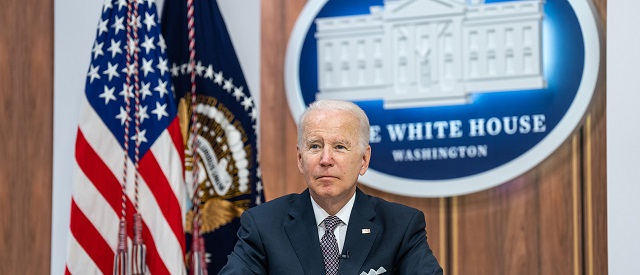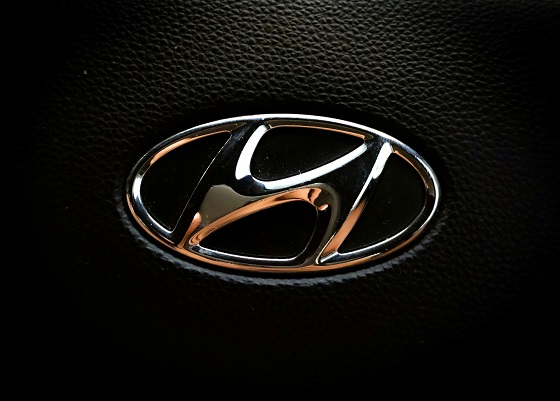Automotive
Biden’s Ambitious EV Charging ‘Fantasy’ May Be On A Collision Course With Reality

 From the Daily Caller News Foundation
From the Daily Caller News Foundation
By NICK POPE
President Joe Biden has pledged to install 500,000 public electric vehicle (EV) chargers around the U.S. by 2030, but logistical hurdles may be too much to overcome.
The Biden administration landed $7.5 billion to build out a network of public EV charging stations around the country in the bipartisan infrastructure package of 2021, but those funds have only led to a handful of operational charging stations to date. Transportation Secretary Pete Buttigieg reaffirmed the administration’s goal to build 500,000 chargers with the money by 2030 during a May television appearance on CBS News, but challenges like adding transmission lines, navigating the permitting process and coordinating with utility companies figure to make the goal improbable.
As of April 1, the administration’s $7.5 billion push had only led to seven operational charging stations combining for less than 40 chargers around the U.S., a pace that has drawn criticism from House Republicans and even Democratic Oregon Sen. Jeff Merkley. While other projects are on their way to being built and operational, the nation’s EV charging infrastructure remains mostly concentrated in more densely-populated, coastal areas of the country, according to the Department of Energy (DOE).
Dem Senator Rips Biden Official Over Sluggish Rollout Of Key EV Program pic.twitter.com/Ldj1dhJ8Jo
— Daily Caller (@DailyCaller) June 5, 2024
While results have been slow to materialize, federal funding should be sufficient to build approximately 25,000 charging spots at about 5,000 stations, according to Atlas Public Policy, a policy analysis organization that focuses specifically on EVs. In order to reach those figures by 2030, the administration’s funding will have to spur the construction of more than 900 stations each year until then, a big step up from the program’s output of less than 10 stations over nearly three years.
“Our programs are accelerating private sector investment that puts us on track to deploy 500,000 charging ports well ahead of schedule and continue to expand a convenient and reliable charging network,” a Department of Transportation spokesperson told the DCNF. “There are currently projects underway in partnership with states and local grantees for 14,000 federally-funded EV charging ports across the country under the [National Electric Vehicle Infrastructure (NEVI)] and [Charging and Fueling Infrastructure (CFI)] programs that will build on the 184,000 chargers operational today.”
Of the 184,000 chargers in operation today, more than 107,000 were already in circulation as of 2020, the last full year before the Biden administration took office, according to the DOE. Moreover, there are only about 10,000 fast charger stations in the U.S., a number that EV proponents would like to see increase to alleviate the public’s concerns about EV range and recharging wait times, according to The Washington Post.
Some of the biggest logistical hurdles are ones that may not be immediately obvious, such as enduring the process of building out needed transmission lines and upgrading existing utility infrastructure to accommodate hundreds of thousands of new chargers, according to experts who spoke with the Daily Caller News Foundation about whether such a number of chargers will be operational by 2030.
One skeptical expert is Dr. Jonathan Lesser, a senior fellow at the National Center for Energy Analytics and president of Continental Economics. Lesser estimates that “hundreds of thousands of miles” of new transmission lines will be needed to deliver enough electricity to the right places to meet the administration’s goal, a tall order given that the U.S. managed to complete less than 700 miles of transmission projects in 2022, according to data aggregated by Statista.
Lesser wrote his own analysis of the challenges the administration’s EV charger push faces for The Hill on Monday.
“The administration’s efforts to mandate EVs without considering the physical infrastructure to charge them (to say nothing of the cost), not only highway charging stations but also the necessary upgrades to millions of miles of local distribution circuits and transformers for home charging – is either an exercise in green virtue signaling or a cynical effort to restrict Americans’ mobility,” Lesser told the DCNF. “If EVs are the wave of the future then consumers will purchase them without the need for mandates and the private sector will develop the necessary infrastructure, just as it did a century ago and just as Tesla has done for its vehicles, without the need for government intervention.”
'Fundamentally Wrong': Virginia Heads For Exit Ramp After Adopting California's 'Out-Of-Touch' EV Rules https://t.co/oOKcH9Dha1
— Daily Caller (@DailyCaller) June 5, 2024
“If all those chargers were in place, you would need hundreds of thousands of large transformers and transmission lines along highways to provide the electricity,” Lesser continued. “You would also need linemen to install everything – and they are already in short supply. Of course, none of this addresses the issue of where the electricity comes from – if it is to be from renewables (e.g., wind and solar), there would have to be a massive building effort.”
Lesser believes there is “not a chance” that the 500,000 charger goal is met by 2030, and added that Buttigieg’s suggestion the administration will reach that target amounts to “pure fantasy.”
In addition to the billions of dollars meant to subsidize public charging infrastructure, the administration is also spending big to help manufacturers produce more EVs and to blunt the higher costs of EVs for consumers. Further, federal agencies have also promulgated aggressive fuel economy standards and tailpipe emissions rules that will force significant increases in EV sales over the next decade for light-, medium- and heavy-duty models.
Energy Secretary Jennifer Granholm described the chargers covered by the $7.5 billion program as “the hardest ones because they’re going to places where the private sector hasn’t gone because there’s no electricity, because they’re remote” at Politico’s 2024 Energy Summit remarks on Wednesday.
Aidan Mackenzie — an infrastructure fellow at the Institute for Progress with particular expertise covering energy, transportation and housing policy — agreed that logistical challenges are likely to hinder the administration’s goal for charger deployment by 2030. Specifically, he highlighted securing complementary infrastructure, like transmission lines, as likely to sap time and resources away from the effort to construct a national network of public chargers.
“It seems like it’s going to be hard to meet this target,” Mackenzie told the DCNF. “Different utility regions do not necessarily have an incentive to plan or build large capacity transmission lines that share power. They often interrupt the way that utilities want to control the generation in their region. So, I would very much expect that to be the binding constraint.”
However, Mackenzie added that the administration could achieve the desired results of its $7.5 billion program and its broader goal of 500,000 charger goal if regulators and builders are able to develop “muscle memory” in the earlier stages of rollout so that officials from both sectors can more easily and quickly navigate complex processes in the near future.
Automotive
Canadians’ Interest in Buying an EV Falls for Third Year in a Row

From Energy Now
Electric vehicle prices fell 7.8 per cent in the last quarter of 2024 year-over-year, according to the AutoTader price index
Fewer Canadians are considering buying an electric vehicle, marking the third year in a row interest has dropped despite lower EV prices, a survey from AutoTrader shows.
Forty-two per cent of survey respondents say they’re considering an EV as their next vehicle, down from 46 per cent last year. In 2022, 68 per cent said they would consider buying an EV.
Meanwhile, 29 per cent of respondents say they would exclusively consider buying an EV — a significant drop from 40 per cent last year.
The report, which surveyed 1,801 people on the AutoTrader website, shows drivers are concerned about reduced government incentives, a lack of infrastructure and long-term costs despite falling prices.
Electric vehicle prices fell 7.8 per cent in the last quarter of 2024 year-over-year, according to the AutoTader price index.
The survey, conducted between Feb. 13 and March 12, shows 68 per cent of non-EV owners say government incentives could influence their decision, while a little over half say incentives increase their confidence in buying an EV.
Automotive
Hyundai moves SUV production to U.S.

 MxM News
MxM News
Quick Hit:
Hyundai is responding swiftly to 47th President Donald Trump’s newly implemented auto tariffs by shifting key vehicle production from Mexico to the U.S. The automaker, heavily reliant on the American market, has formed a specialized task force and committed billions to American manufacturing, highlighting how Trump’s America First economic policies are already impacting global business decisions.
Key Details:
-
Hyundai has created a tariffs task force and is relocating Tucson SUV production from Mexico to Alabama.
-
Despite a 25% tariff on car imports that began April 3, Hyundai reported a 2% gain in Q1 operating profit and maintained earnings guidance.
-
Hyundai and Kia derive one-third of their global sales from the U.S., where two-thirds of their vehicles are imported.
Diving Deeper:
In a direct response to President Trump’s decisive new tariffs on imported automobiles, Hyundai announced Thursday it has mobilized a specialized task force to mitigate the financial impact of the new trade policy and confirmed production shifts of one of its top-selling models to the United States. The move underscores the gravity of the new 25% import tax and the economic leverage wielded by a White House that is now unambiguously prioritizing American industry.
Starting with its popular Tucson SUV, Hyundai is transitioning some manufacturing from Mexico to its Alabama facility. Additional consideration is being given to relocating production away from Seoul for other U.S.-bound vehicles, signaling that the company is bracing for the long-term implications of Trump’s tariffs.
This move comes as the 25% import tax on vehicles went into effect April 3, with a matching tariff on auto parts scheduled to hit May 3. Hyundai, which generates a full third of its global revenue from American consumers, knows it can’t afford to delay action. Notably, U.S. retail sales for Hyundai jumped 11% last quarter, as car buyers rushed to purchase vehicles before prices inevitably climb due to the tariff.
Despite the trade policy, Hyundai reported a 2% uptick in first-quarter operating profit and reaffirmed its earnings projections, indicating confidence in its ability to adapt. Yet the company isn’t taking chances. Ahead of the tariffs, Hyundai stockpiled over three months of inventory in U.S. markets, hoping to blunt the initial shock of the increased import costs.
In a significant show of good faith and commitment to U.S. manufacturing, Hyundai last month pledged a massive $21 billion investment into its new Georgia plant. That announcement was made during a visit to the White House, just days before President Trump unveiled the auto tariff policy — a strategic alignment with a pro-growth, pro-America agenda.
Still, the challenges are substantial. The global auto industry depends on complex, multi-country supply chains, and analysts warn that tariffs will force production costs higher. Hyundai is holding the line on pricing for now, promising to keep current model prices stable through June 2. After that, however, price adjustments are on the table, potentially passing the burden to consumers.
South Korea, which remains one of the largest exporters of automobiles to the U.S., is not standing idle. A South Korean delegation is scheduled to meet with U.S. trade officials in Washington Thursday, marking the start of negotiations that could redefine the two nations’ trade dynamics.
President Trump’s actions represent a sharp pivot from the era of global corporatism that defined trade under the Obama-Biden administration. Hyundai’s swift response proves that when the U.S. government puts its market power to work, foreign companies will move mountains — or at least entire assembly lines — to stay in the game.
-

 2025 Federal Election3 hours ago
2025 Federal Election3 hours agoThe Federal Brief That Should Sink Carney
-

 2025 Federal Election5 hours ago
2025 Federal Election5 hours agoHow Canada’s Mainstream Media Lost the Public Trust
-

 2025 Federal Election8 hours ago
2025 Federal Election8 hours agoOttawa Confirms China interfering with 2025 federal election: Beijing Seeks to Block Joe Tay’s Election
-

 2025 Federal Election7 hours ago
2025 Federal Election7 hours agoReal Homes vs. Modular Shoeboxes: The Housing Battle Between Poilievre and Carney
-

 John Stossel4 hours ago
John Stossel4 hours agoClimate Change Myths Part 2: Wildfires, Drought, Rising Sea Level, and Coral Reefs
-

 COVID-196 hours ago
COVID-196 hours agoNearly Half of “COVID-19 Deaths” Were Not Due to COVID-19 – Scientific Reports Journal
-

 2025 Federal Election2 days ago
2025 Federal Election2 days agoPolls say Canadians will give Trump what he wants, a Carney victory.
-

 2025 Federal Election2 days ago
2025 Federal Election2 days agoPoilievre’s Conservatives promise to repeal policy allowing male criminals in female jails
